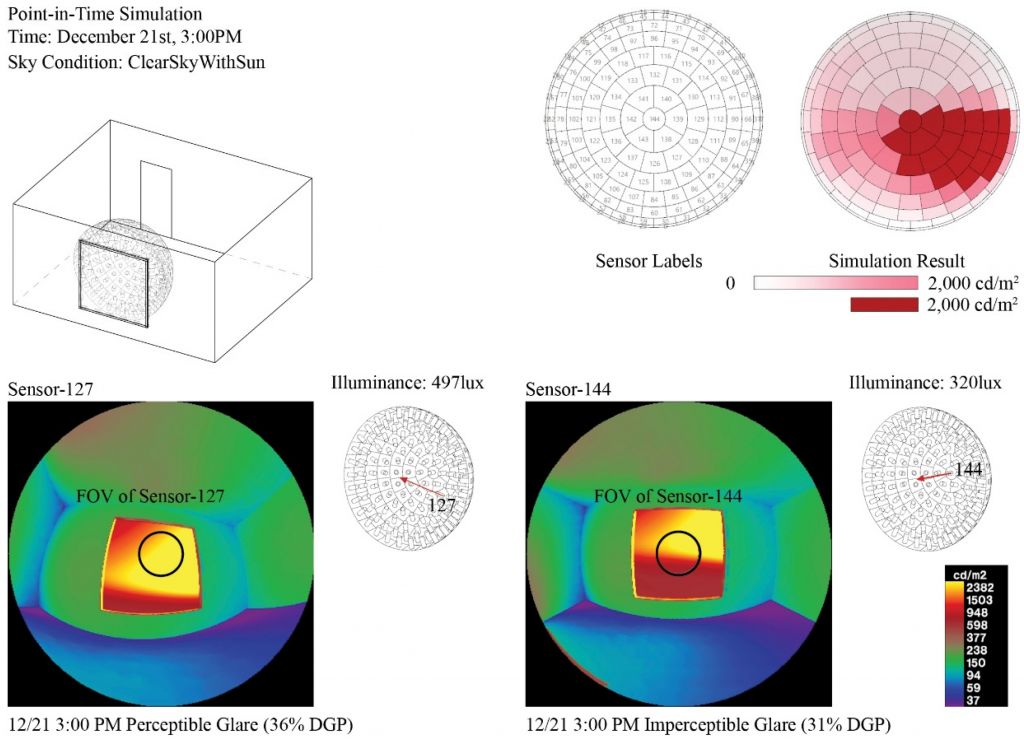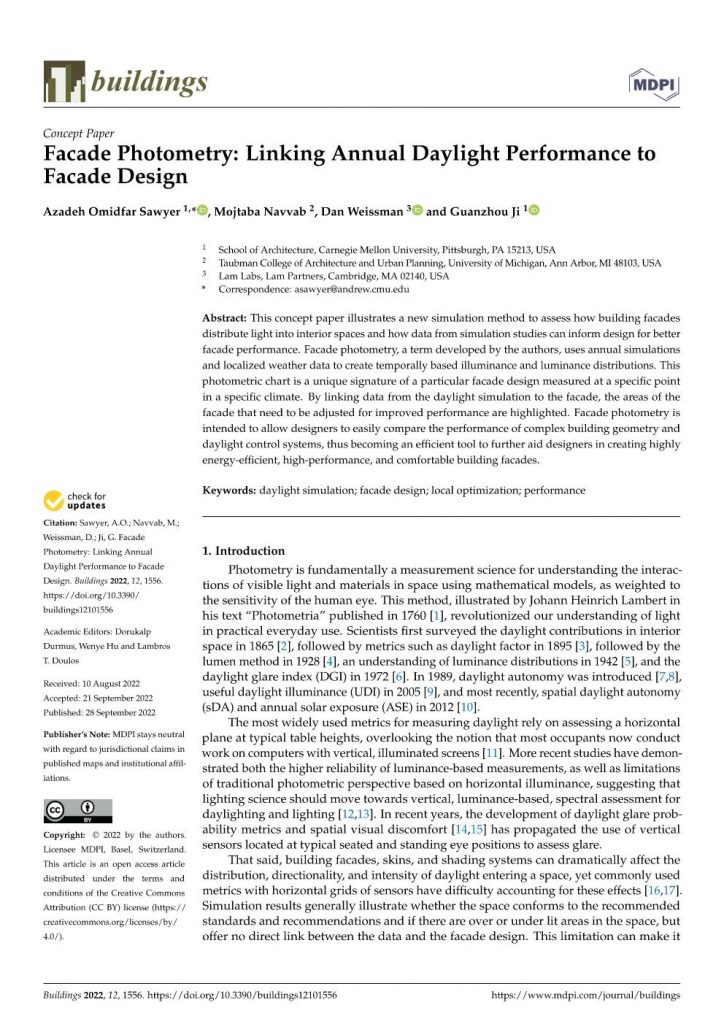
Facade Photometry
Completed
2022
Published
Collaborators
1 School of Architecture, Carnegie Mellon University, Pittsburgh, PA 15213, USA
2 Taubman College of Architecture and Urban Planning, University of Michigan, Ann Arbor, MI 48103, USA
Lam Team

A proposed simulation method for assessing daylight distribution through facades based on principles of photometry
Abstract
This concept paper illustrates a new simulation method to assess how building facades distribute light into interior spaces and how data from simulation studies can inform design for better facade performance. Facade photometry, a term developed by the authors, uses annual simulations and localized weather data to create temporally based illuminance and luminance distributions. This photometric chart is a unique signature of a particular facade design measured at a specific point in a specific climate. By linking data from the daylight simulation to the facade, the areas of the facade that need to be adjusted for improved performance are highlighted. Facade photometry is intended to allow designers to easily compare the performance of complex building geometry and daylight control systems, thus becoming an efficient tool to further aid designers in creating highly energy-efficient, high-performance, and comfortable building facades.




